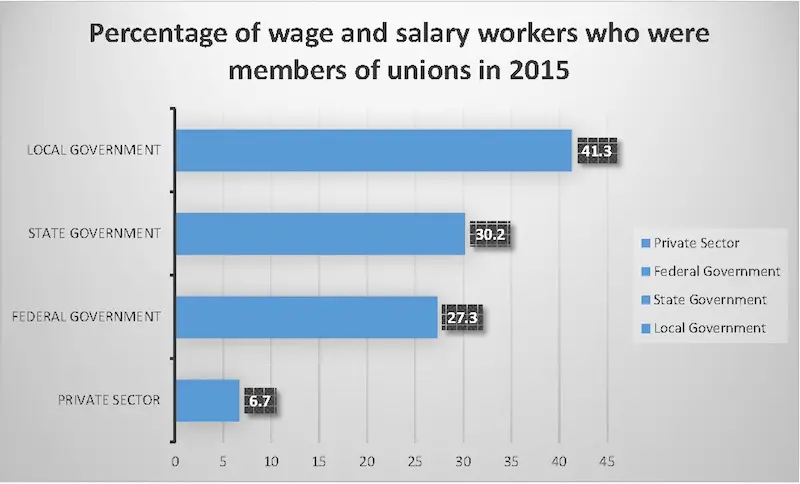Overlooked in the Bureau of Labor Statistics’s annual release announcing union membership were data indicating that federal unions added approximately 40,000 members in 2015, the largest net increase since 2008.
At the same time, a faster pick-up in federal hiring resulted in the percentage of federal unionized workers showing little change, from 27.5 percent of the federal workforce in 2014 to 27.3 percent in 2015. Ten years ago, BLS reported that unionized workers accounted for 27.8 percent of the federal workforce.
BLS data for the federal government includes the U.S. Postal Service, which is a traditionally heavily-unionized part of the federal government. Because the survey is based on a sample, small differences should not be judged as statistically significant.
Unionization rates in the public sector far exceed those in the private sector (6.7 percent), a rate which has held relatively steady since 2012.
While approximately 15 percent of the nation’s wage and salary workers are employed in the public sector, they constitute nearly 49 percent of union membership. Although federal workers are more than four times more likely to belong to a union than a private sector employee, federal workers continue to show lower unionization rates than their counterparts in state governments (30.2 percent) and local governments (41.3 percent).
Overall, 11.1 percent of wage and salary workers in the U.S. belonged to unions in 2015, the same percentage as in 2014.
Most federal unions are prohibited from negotiating wages and benefits, but unions still have an impact on “quality-of-life” and working condition issues affecting federal employees, although federal law prohibits strikes by federal and postal employees.
Public sector unions continue to deal with political and legal challenges. The most recent legislative proposal is the Federal Employee Rights Act, which Congressman Tom Price characterizes as offering “basic paycheck, workplace, and ballot protections, putting the interest of federal employees first.”
American Federation of Government Employees National President J. David Cox Sr. has said that this same legislation “is yet another in a long line of systematic attacks on working-class and middle-class Americans at the local, state and federal levels. The sole objective of these anti-labor actions is to make it as difficult as possible for working people to join unions and to diminish basic rights and protections that all employees deserve.”
On the legal front, in January, the U.S. Supreme Court heard oral arguments in Friedrichs v. California Teachers Association (CTA), which could void the right of unions to collect dues from workers represented by union-negotiated collective bargaining contracts. Opinion on how the Supreme Court would rule in this case has been upended by the death of Justice Antonin Scalia.
The challenge for federal employee unions is to continue to add members in the face of Congressional opposition as they deal with political and legal attempts to restrict their activities and funding.



